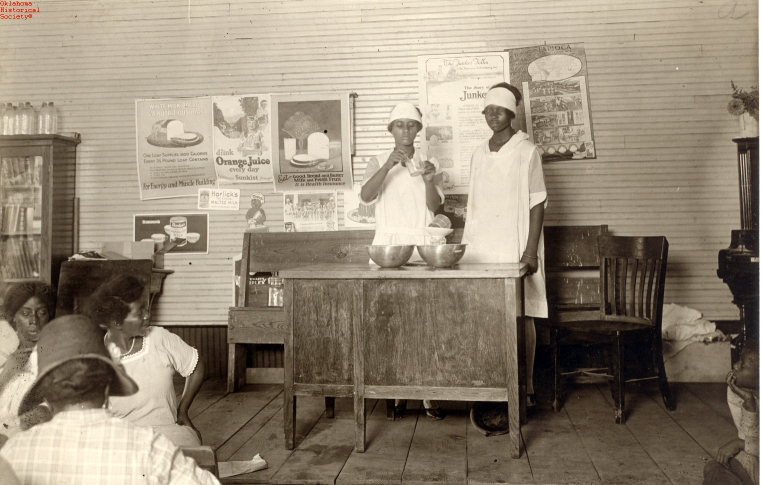
4-H.
In the early 1900s growing quality corn and cotton was serious business in Oklahoma, not only for farmers, but for young boys as well. In 1908 W. D. Bentley, a pioneer of university extension work in Oklahoma, set up headquarters in Tishomingo to help fledgling ranchers and farmers improve harvests. The 4-H idea in Oklahoma took root when Bentley enrolled fifty boys from across Johnston County to be part of a Boy's Corn Club in 1909. The next year Sen. Thomas P. Gore offered an all-expense-paid trip to Washington, D.C., to the Oklahoma champion corn-growing boy. Floyd Gayer of Ardmore prevailed with a yield of more than ninety-five bushels per acre at a time when experienced farmers were averaging only forty-five.
When girls established tomato and canning clubs that same year, early extension agents traveled by horse and buggy to visit the corn and tomato plots, picking up club members along the way so they could visit the projects together. The groups concentrated on helping young people gain new knowledge about their projects through direct, hands-on applications; they learned by doing. At first, groups such as the New York Education Board (an effort of wealthy New York men, including John D. Rockefeller) and the Fort Smith and Western Railroad financed club work, but in 1914 the U.S. Department of Agriculture began to take an interest.
The Smith-Lever Act (1914) authorized the federal government to help fund university extension work as well as the youth clubs. Enrollment skyrocketed, growing from those first fifty members in 1909 to almost twelve thousand in Oklahoma by 1915. Not until the 1920s did the clubs adopt the name 4-H and the ideology of pledging their "head to clearer thinking . . . heart to greater loyalty . . . hands to larger service and . . . health to better living."
4-H has evolved into an organization dedicated to the development of young people ages nine to nineteen, encouraging them to recognize their strengths and opportunities and to build better selves, communities, and worlds. 4-H clubs are now as prevalent in urban settings as they are in rural. Over the years, hundreds of thousands of Oklahoma 4-H members have contributed countless hours to the communities where they live. In 1943, for instance, Oklahoma 4-H'ers sold war bonds, raising nearly $9 million for the purchase of thirty B-24 Liberator bombers. When clubs later learned that the U.S. War Department needed pods from milkweed plants to use as filler in U.S. Navy life jackets, in Craig County alone 4-H clubs filled over 886 sacks with the seed pods.
Today more than 150,000 youths from all seventy-seven Oklahoma counties are involved in 4-H programs, whether in traditional 4-H clubs, school enrichment programs, or 4-H outreach. The continued success of 4-H in Oklahoma can be attributed to its dedication to young people, allowing them to look for opportunities that interest them in their own place and time, whether it be in science, computer technology, crafts, entomology, cooking, agriculture, education, animal science, writing, horticulture, or community service.







